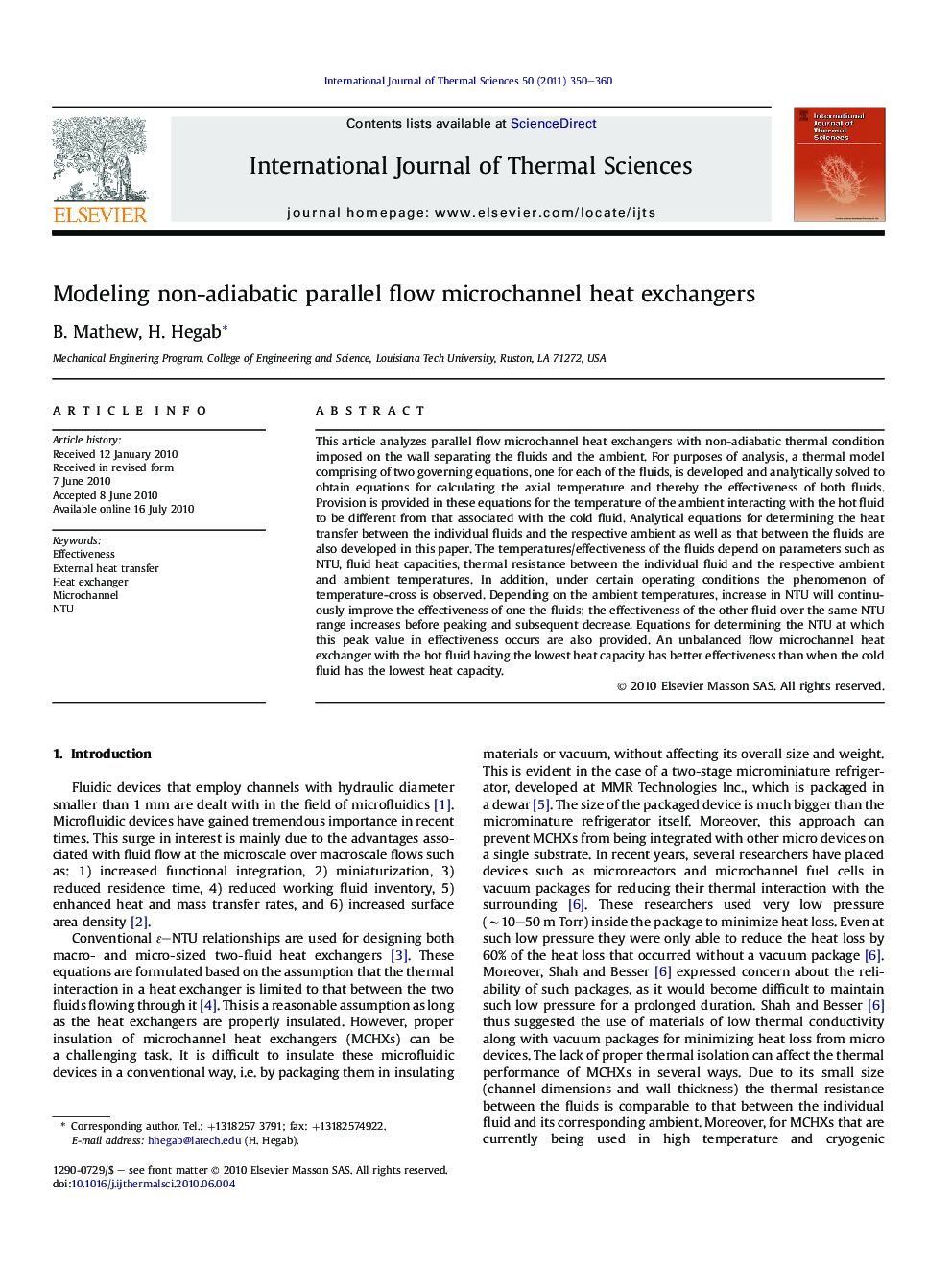| Article ID | Journal | Published Year | Pages | File Type |
|---|---|---|---|---|
| 670192 | International Journal of Thermal Sciences | 2011 | 11 Pages |
Abstract
This article analyzes parallel flow microchannel heat exchangers with non-adiabatic thermal condition imposed on the wall separating the fluids and the ambient. For purposes of analysis, a thermal model comprising of two governing equations, one for each of the fluids, is developed and analytically solved to obtain equations for calculating the axial temperature and thereby the effectiveness of both fluids. Provision is provided in these equations for the temperature of the ambient interacting with the hot fluid to be different from that associated with the cold fluid. Analytical equations for determining the heat transfer between the individual fluids and the respective ambient as well as that between the fluids are also developed in this paper. The temperatures/effectiveness of the fluids depend on parameters such as NTU, fluid heat capacities, thermal resistance between the individual fluid and the respective ambient and ambient temperatures. In addition, under certain operating conditions the phenomenon of temperature-cross is observed. Depending on the ambient temperatures, increase in NTU will continuously improve the effectiveness of one the fluids; the effectiveness of the other fluid over the same NTU range increases before peaking and subsequent decrease. Equations for determining the NTU at which this peak value in effectiveness occurs are also provided. An unbalanced flow microchannel heat exchanger with the hot fluid having the lowest heat capacity has better effectiveness than when the cold fluid has the lowest heat capacity.
Related Topics
Physical Sciences and Engineering
Chemical Engineering
Fluid Flow and Transfer Processes
Authors
B. Mathew, H. Hegab,
